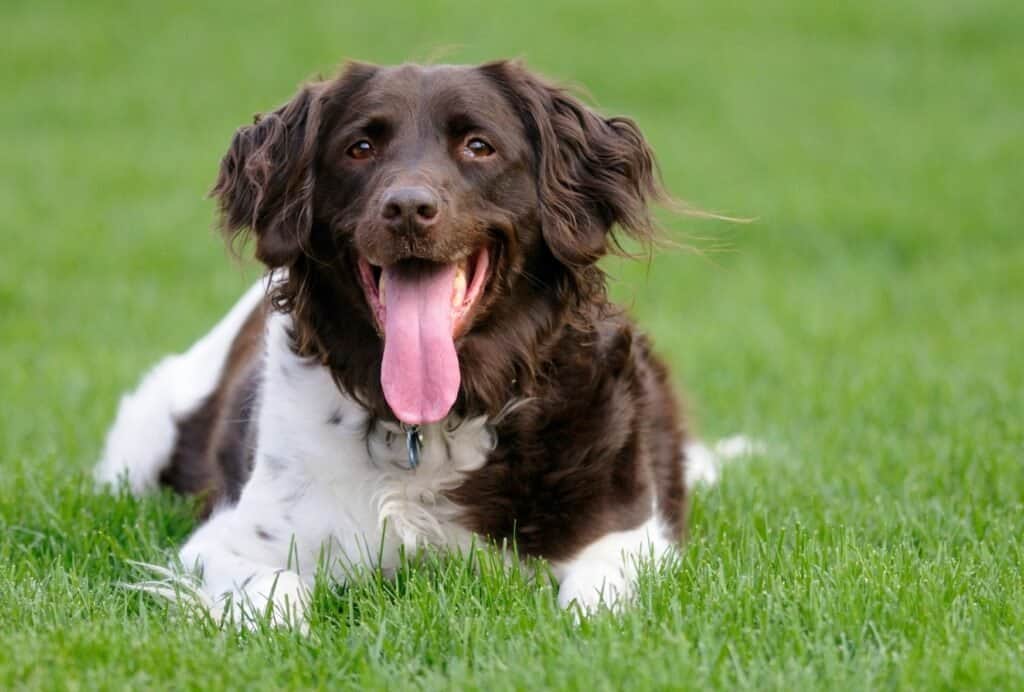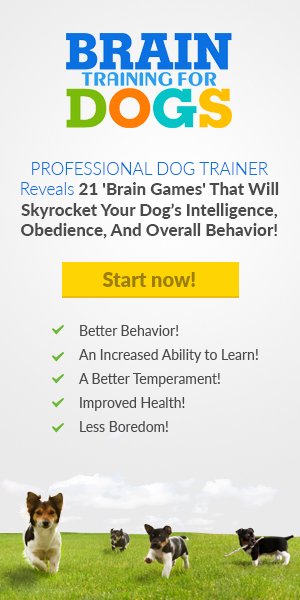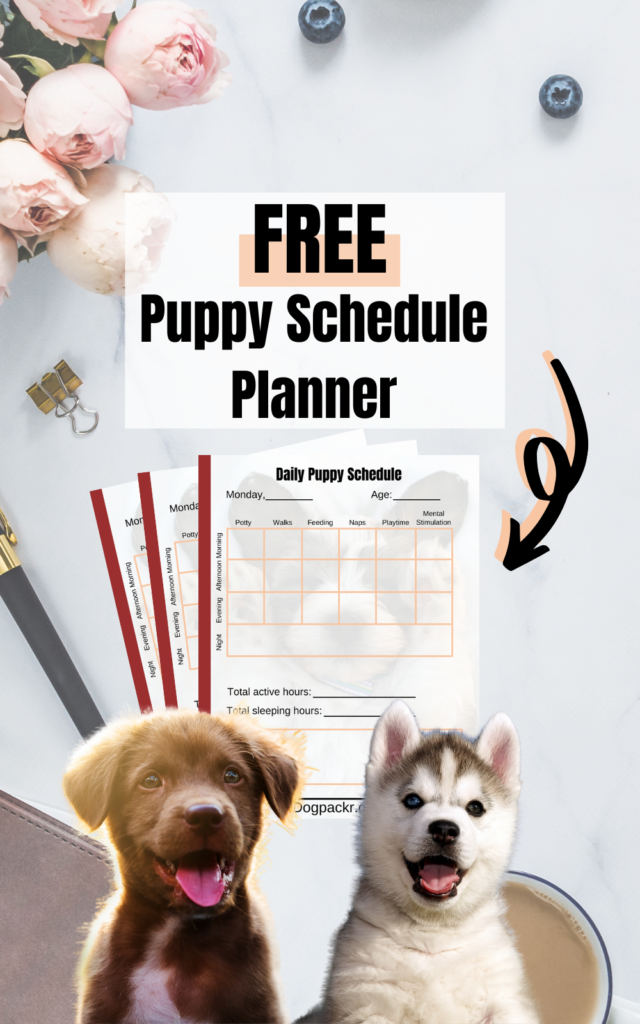
Is your dog often tense and anxious?
Then you’re probably wondering: How can I calm a stressed dog?
My Mini Poodle Baloo is incredibly sensitive. This means he also gets stressed very easily. Literally, all it takes is for me to be a little tense and he immediately senses it and gets stressed…
So, because I’m so exposed to this topic, I’ve put together these 11 tips to calm a stressed dog naturally. Because luckily we’ve found a way to reduce his stress level to a minimum. And all of that without any medication, which, quite frankly, is rarely necessary.
This is much healthier for him and much more comfortable for me.
Let’s first start with the symptoms of stress and anxiety in dogs.
Critical signs of stress in a dog
If you’re wondering how to calm your stressed or anxious dog, the first thing is to recognize when he’s stressed or anxious.
If your dog shows any of these signs, it might mean something is stressing him out.
Shaking or Pacing
If your dog is stressed or anxious, he’ll have trouble settling down. Keep your eye out for symptoms such as shaking or pacing. If you notice he’s trembling or keeps pacing around your house, he’s probably feeling stressed or anxious.
Make sure to pay attention to when he’s showing these signs. That will help you understand what exactly is making him stressed.
Excessive Panting, Drooling, or Lip Licking
If your dog is feeling stressed, he might start panting heavily. This is a really common behavior for anxious dogs. So if it’s not hot, and your dog hasn’t been performing any physical activity, his panting could mean he’s stressed or anxious.
The same is true for drooling and lip licking. Open mouth breathing—which panting is a form of—might encourage your dog’s salivary glands to start working, which results in drooling. Lip licking is usually a sign of appeasement with dogs.

Whining, Barking, or Howling
One of the ways dogs communicate is vocally. While they can’t make the same sounds we use to speak, they still use noises to tell us and other dogs what they’re feeling.
A stressed or anxious dog will tell you what he’s feeling by whining, barking, or howling.
Again, it’s important to pay attention to when he’s doing these things. If he tends to be more vocal when things are happening that might be stressors, that’s a sign he’s struggling with anxiety. If it’s not entirely clear the source of his anxiety is, this might be an important clue.
Changes in Body Posture
Body language is another way dogs communicate with us and other dogs. It’s important to understand your dog’s body language since that’s one of the main ways they tell us what they’re feeling.
If your dog is stressed he might show “whale eyes,” which is when the whites of your dog’s eyes are visible. He might also tuck his ears and his tail down, or raise his hackles.

Excessive Thirst
Is your dog suddenly very thirsty? That could be a sign he’s anxious or stressed about something.
Drinking excessively can actually be a “displacement behavior” with dogs. A displacement behavior is one that an animal experiences when they’re faced with a stressful situation, and can’t figure out what else to do.
If your dog is stressed but doesn’t know how to deal with that stress, he might start drinking a lot because he’s just not certain what else to do in that situation.
Hiding or Avoidance
Just like we tend to hide from stressful and uncomfortable situations, if a dog is feeling stressed, he might try and avoid what’s making him anxious. If you notice your dog suddenly seeking out hiding places and acting avoidant, that’s a major sign that he’s feeling anxious about something.
In this video you can see the signs very clearly:
How to Calm a Stressed Dog Naturally
We’ve covered some of the major signs of stress and anxiety in dogs. So now let’s look at some ways to calm your pup. And don’t worry, these are all-natural ways to help your dog settle down.
There are quite a few methods you can try using to calm your dog when he’s stressed. First, though, identify and get him away from the source of his stress, if that’s possible. White noise, scents, a quiet time-out, massages or just holding him can all take your dog’s mind off the stress.
1. Get Him Away from the Stress or Stimuli
The first way to calm your dog is the most obvious one. If your dog is stressed out by something, get him away from whatever is making him anxious!
Depending on what exactly is stressing him out, just removing the stimuli might not be a long-term solution. But getting your pup away from the stressors is the first step to counter conditioning and desensitization training.
Once you remove the stressor, you can start slowly reintroducing it to your dog in a controlled way. This will help him become accustomed to what’s stressing him out until it doesn’t make him anxious anymore.
Here’s how you can desensitize and counter condition your pup:
2. Sit Down with Him and Simply Hold Him Still
It might seem weird, but pulling your dog into your lap and just holding him steady can actually help your dog settle down.
Dogs have trouble understanding where their bodies start and end when they’re overstimulated. Holding your stressed dog helps him be more aware of his body, which will help him calm down. It’s a lot like mindfulness for humans!
3. Scents Can Calm a Stressed Dog Naturally
Dogs have an incredibly sensitive sense of smell. Because of that, it makes sense to use their sensitive noses to our advantage when calming them down.
Aromatherapy for dogs isn’t anything new. It’s been used for both humans and animals for centuries, and many people continue to promote aromatherapy as a holistic way of treating anxiety in dogs.
You can purchase special diffusers for your dog, or even collars that carry calming scents like lavender.
For more information on how to safely use aromatherapy for dogs, make sure to check out this video:
4. Calming Music or White Noise
There is recent research that shows that calm, relaxing music or white noise can help your dog calm down if he’s stressed.
If, for example, your dog gets anxious when he’s alone, you can try playing some calming music for him when you leave the house. There are hundreds of YouTube videos and Spotify playlists to choose from for your dog.
Make sure to remember not to use the same video or playlist, though. Your dog might start getting used to it if it’s the same thing over and over again, and could begin showing signs of anxiety again.
5. Be Calm Around Your Stressed Dog
Dogs are super emotional animals, and can easily pick up on what you’re feeling. If we’re happy and excited our dogs can tell and will start getting happy and excited too!
But if you’re stressed, your dog can pick up on that through your movements, your tone of voice, and the way you carry yourself.
That’s why it’s really important to be calm yourself if you’re dealing with your stressed dog.
If you continue to show your dog that you’re anxious, that will only encourage him to be more anxious too. So, as hard as it is, it’s important to be calm. This will help your pup stay calm himself.
6. Nose Work
What is nose work?
Essentially, it’s exactly what it says on the tin: It’s work your dog does with his nose. Since your dog’s nose is so sensitive, him being able to work his nose is important.
Nose work also keeps your dog busy, which means he’ll be focusing on his nose work instead of whatever is making him anxious. Doing nose work will also help your dog be more confident. By becoming more confident, your dog will be less stressed out by unfamiliar stimuli.
Make sure to check out Dogpackr’s scent guide to learn more about your pup’s sniffing capabilities, and add nose work to your routine!
7. Provide Lots of Physical Exercise
You’ve heard the mantra: “A tired dog is a happy dog.” A tired dog is also a dog that doesn’t have the time or energy to be stressed out all the time.
Exercising your dog reduces adrenaline. Adrenaline is what triggers a fight or flight response. If your dog’s levels of adrenaline are reduced, that means that his responses to stressors and stimuli will be less intense.
And don’t forget, physical exercise is good for you too! Taking your dog for a jog, a hike, or joining dog sports like flyball and disc are awesome ways to get exercise and bond with your dog. Remember to work your dog’s brain with plenty of brain games, too.
Mental stimulation can also be a wonderful training tool if used correctly. Check out Braintrainingfordogs to learn how to train your dog to be the best dog he can be by using mental stimulation! Or have a look at Dogpackr’s review first to see if it’s a fit for you and your dog!

8. Massage
Is there anything more relaxing than a nice massage?
If your dog is struggling with stress and anxiety, giving him a nice massage is a great way to help him relax. Not only that, but massaging lowers blood pressure, relieves stiffness in your dog’s joints, and warms him up for exercise.
What’s great is that massages are something you can give your dog yourself. Here are some instructions and massaging tips:
9. Time-Out
This is one situation where crate training your dog will be super helpful.
If your dog is stressed out and anxious, you can put him in his crate for a time-out.
Remember that this kind of time-out isn’t a punishment. Sometimes a time-out just means giving your dog a few minutes to cool down. Putting your dog in his crate where he can settle down can be really helpful in calming him down when he’s stressed.
10. Thundershirt
A Thundershirt is a type of garment for your dog. It applies gentle pressure to your dog’s body, which helps calm anxiety.
Thundershirts work essentially the same way weighted blankets do. What happens is that the pressure activates the parasympathetic nervous system, which is responsible for conserving energy.
The pressure of a Thundershirt will slow a dog’s heart rate, leading to feelings of calm and relaxation.
11. Talk to Your Vet
If you’ve tried these natural remedies for stress and anxiety and none of them seem to be helping your dog, then it might be time to visit your vet.
Your vet will be able to tell you if there’s something else wrong with your dog that you need to work on and set you up with a treatment plan. Or, if your dog’s anxiety is severe, they’ll be able to prescribe medication to help your dog.
How to calm a stressed dog FAQ
By now you should have a pretty good idea where you might start when you’re trying to calm a stressed dog overall. ´Here’s a bit more info on how to deal with stress in dogs that are hyper in general, as well as with two common kinds of dog anxiety: car anxiety and separation anxiety.
How to Calm a Hyper Dog
If your dog tends to be hyper, that can be difficult to deal with. Luckily, there are lots of ways you can help calm down your hyper dog.
For more information and tips on how to help a hyper dog calm down, take a look at my article about what you can do to calm your hyperactive dog down.
How to Calm a Dog with Car Anxiety
Taking your dog on trips is super fun, but if your dog has car anxiety, it can be hard to do that. Getting your dog into the car is a necessary part of being a dog owner, too. After all, you need to take him to the vet for his checkups!
If your dog has car anxiety, check out this article for tips and tricks on dealing with it, and getting your dog used to being in a car.
How to Calm a Dog’s Separation Anxiety
Separation anxiety can be a really difficult behavioral problem to deal with. If your dog gets anxious and stressed when you’re away from him, that can be highly distressing for both you and your dog.
Your dog feels anxious and panicked being alone, and you might feel guilty leaving him by himself. Living this way won’t be fulfilling for either of you.
The good news: While treating separation anxiety can require a lot of time and patience, there are ways to do it.
If your dog has minor separation anxiety, you might want to try leaving a worn shirt with your scent on it for him to smell.
You should also be mindful not to make a big deal out of leaving the house. And try implementing a word or action that will tell your dog not to worry, you’ll be back.
For example, when you leave you can say, “I’m going to work.” Over time, your dog will understand that it means that you’re leaving for a little bit, but you will be coming back!
For more severe separation anxiety, crate training your dog will be super useful. Giving your dog toys that will keep him busy for a long time can be helpful too.
Depending on how severe his separation anxiety is, you might want to consider hiring a dog trainer to help you.
Here are some further tips how to deal with it:
Conclusion
A stressed or anxious dog can be difficult to deal with. The trick is to pay attention to your dog and understand when he’s trying to tell you that he’s feeling stressed out.
Once you know what situations trigger anxiety in your dog, you can try implementing some of the tips above. And once you find out what works for you and your dog, over time you’ll both know exactly how to deal with your dog’s anxiety.
This means a happier, healthier dog—and a happier, healthier you too!
P.s.: Don’t forget to check out Braintraining4dogs if you want to take your dog training game to the next level. It offers a 60-day money back guarantee, so you have nothing to lose.

*Disclosure: This post may contain affiliate links, meaning, I get a commission if you decide to make a purchase through one of my links, at no cost to you.

